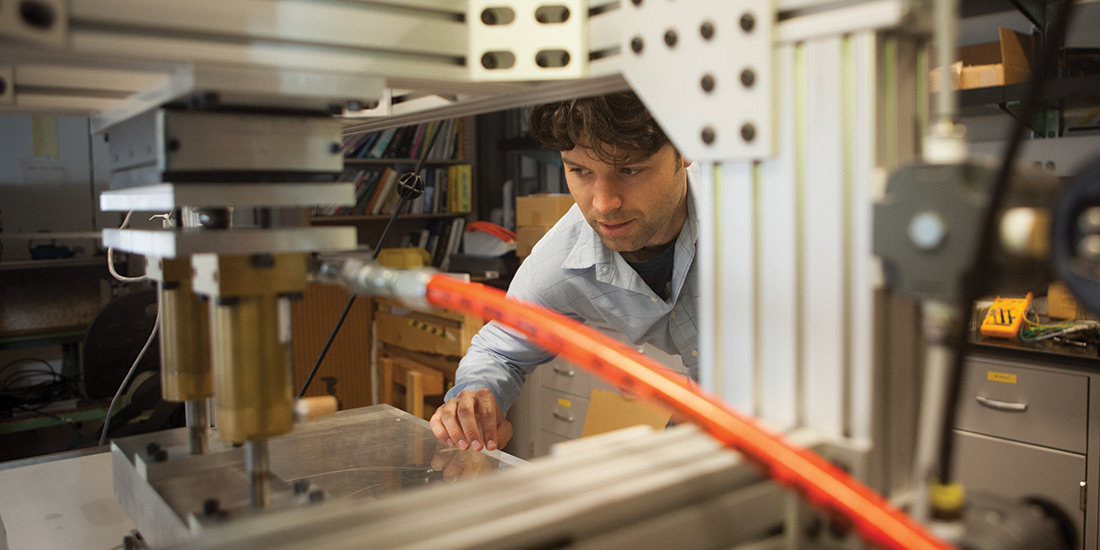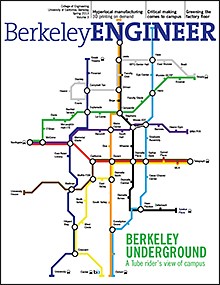
To a fault
The typical lifecycle of an earthquake fault looks like this: rupture, rest, repeat. Now, Berkeley researchers have found that the “rest” component of this process is linked to the destructive potential of earthquakes on a given fault. A new study from the lab of civil and environmental engineering professor Steven Glaser shows that determining how long a fault has healed between seismic events can allow scientists to accurately predict the type of shaking that will occur when it ruptures again. Study lead author Gregory McLaskey (Ph.D.’11 CEE) built a tabletop model of a quake fault equipped with sensors, which enabled the research team to test different earthquake scenarios and learn more about high-frequency seismic waves, which produce rapid jolts and cause the most damage. The study, published in Nature, could help engineers better evaluate buildings, bridges and roads for seismic vulnerabilities, and ultimately develop ways to mitigate the risk of damage.

